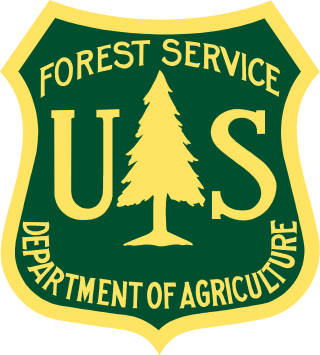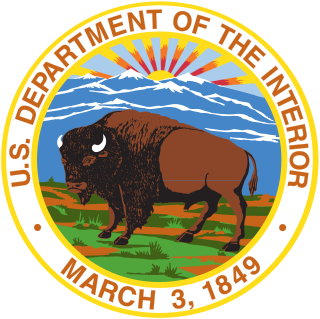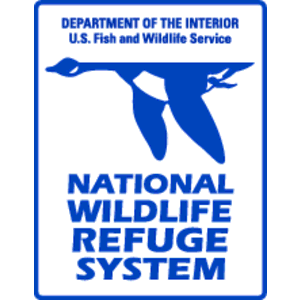
The National Oceanic and Atmospheric Administration is a US scientific and regulatory agency charged with forecasting weather,monitoring oceanic and atmospheric conditions,charting the seas,conducting deep-sea exploration,and managing fishing and protection of marine mammals and endangered species in the US exclusive economic zone. The agency is part of the United States Department of Commerce and is headquartered in Silver Spring,Maryland.

The United States Forest Service (USFS) is an agency within the U.S. Department of Agriculture that administers the nation's 154 national forests and 20 national grasslands covering 193 million acres (780,000 km2) of land. The major divisions of the agency are the Chief's Office,National Forest System,State and Private Forestry,Business Operations,as well as Research and Development. The agency manages about 25% of federal lands and is the sole major national land management agency not part of the U.S. Department of the Interior.

The United States Department of the Interior (DOI) is an executive department of the U.S. federal government responsible for the management and conservation of most federal lands and natural resources. It also administers programs relating to Native Americans,Alaska Natives,Native Hawaiians,territorial affairs,and insular areas of the United States,as well as programs related to historic preservation. About 75% of federal public land is managed by the department,with most of the remainder managed by the Department of Agriculture's Forest Service. The department was created on March 3,1849. It is headquartered at the Main Interior Building,located at 1849 C Street NW in Washington,D.C.

National Wildlife RefugeSystem (NWRS) is a system of protected areas of the United States managed by the United States Fish and Wildlife Service (FWS),an agency within the Department of the Interior. The National Wildlife Refuge System is the system of public lands and waters set aside to conserve America's fish,wildlife,and plants. Since President Theodore Roosevelt designated Florida's Pelican Island National Wildlife Refuge as the first wildlife refuge in 1903,the system has grown to over 568 national wildlife refuges and 38 wetland management districts encompassing about 856,000,000 acres (3,464,109 km2).

Stewart Lee Udall was an American politician and later,a federal government official who belonged to the Democratic Party. After serving three terms as a congressman from Arizona,he served as Secretary of the Interior from 1961 to 1969,under presidents John F. Kennedy and Lyndon B. Johnson. A staunch liberal,he is best known for enthusiastically promoting environmentalism while in the cabinet,with success primarily under President Johnson.
Adaptive management,also known as adaptive resource management or adaptive environmental assessment and management,is a structured,iterative process of robust decision making in the face of uncertainty,with an aim to reducing uncertainty over time via system monitoring. In this way,decision making simultaneously meets one or more resource management objectives and,either passively or actively,accrues information needed to improve future management. Adaptive management is a tool which should be used not only to change a system,but also to learn about the system. Because adaptive management is based on a learning process,it improves long-run management outcomes. The challenge in using the adaptive management approach lies in finding the correct balance between gaining knowledge to improve management in the future and achieving the best short-term outcome based on current knowledge. This approach has more recently been employed in implementing international development programs.

The Marine Mammal Protection Act (MMPA) was the first act of the United States Congress to call specifically for an ecosystem approach to wildlife management.

The Wisconsin Department of Natural Resources (WDNR) is a government agency of the U.S. state of Wisconsin charged with conserving and managing Wisconsin's natural resources. The Wisconsin Natural Resources Board has the authority to set policy for the WDNR. The WDNR is led by the Secretary,who is appointed by the Governor of Wisconsin. The WDNR develops regulations and guidance in accordance with laws passed by the Wisconsin Legislature. It administers wildlife,fish,forests,endangered resources,air,water,waste,and other issues related to natural resources. The central office of the WDNR is located in downtown Madison,near the state capitol.

Will Shafroth is a conservationist and outdoor recreation enthusiast whose professional career has been in preservation and protection of public lands. Since July 2015,Shafroth has served as President and CEO of the National Park Foundation.

The Florida Department of Environmental Protection (FDEP) is the Florida government agency responsible for environmental protection.

The Conservation Effects Assessment Project (CEAP) was established in 2002 to quantify the environmental impact of the United States Department of Agriculture's (USDA) conservation program. The project focuses on how watersheds are affected. CEAP monitored 14 benchmark watershed sites. The CEAP's vision is to enhance "natural resources and healthier ecosystems through improved conservation effectiveness and better management of agricultural landscapes. The goal is "to improve efficacy of conservations practices and programs by quantifying conservation effects and providing the science and education base needed to enrich conservation planning,implementation,management decisions,and policy."

David J. Hayes is an American attorney and legal scholar who serves in the Biden Administration as Special Assistant to the President for Climate Policy. Hayes has led White House work on clean energy deployment issues,climate resilience and greenhouse gas emission reduction and carbon sequestration initiatives. Hayes also has assisted in developing and implementing the climate-related provisions included in the Infrastructure Investment and Jobs Act and the Inflation Reduction Act.

Norman Irving Wengert was an American political scientist who wrote about the politics of natural resources,advanced a seminal theory of the "politics of getting",and had a number of significant roles in his public and academic career. He was born in Milwaukee,Wisconsin to Eugene F. and Lydia Semmann Wengert. He pioneered the revival of the study of political economy in the United States with publication of Natural Resources and the Political Struggle,and later authored more than fifty monographs and studies on the political economy and public administration of environmental resources. His scholarship explored the politics of natural resources and environmental policy formation and administration,with emphases in national energy policy,urban water planning and management,land use planning and controls,national forest management,and citizen participation in administrative processes.

The Arctic policy of the United States is the foreign policy of the United States in regard to the Arctic region. In addition,the United States' domestic policy toward Alaska is part of its Arctic policy.
The College of Natural Resources and Environment at Virginia Tech contains academic programs in forestry,fisheries,wildlife sciences,geography,and wood science. The college contains four departments as well as a graduate program in the National Capital Region and a leadership institute for undergraduates.

The Ministry of Natural Resources and Environmental Sustainability,is a ministry of the Government of Malaysia that is responsible for natural resources,environment,climate change,land,mines,minerals,geoscience,biodiversity,wildlife,national parks,forestry,surveying,mapping and geospatial data.

Forest conservation is the practice of planning and maintaining forested areas for the benefit and sustainability of future generations. Forest conservation involves the upkeep of the natural resources within a forest that are beneficial for both humans and the ecosystem. Forests provide wildlife with a suitable habitat for living which allows the ecosystem to be biodiverse and benefit other natural processes. Forests also filter groundwater and prevent runoff keeping water safe for human consumption. There are many types of forests to consider and various techniques to preserve them. Of the types of forests in the United States,they each face specific threats. But,there are various techniques to implement that will protect and preserve them.

Ann M. Bartuska is an ecologist and biologist. She is a senior advisor at Resources for the Future and a former Deputy Under Secretary for Research,Education,and Economics (REE) at the United States Department of Agriculture and former USDA Chief Scientist.

Mamie Parker is an American biologist,conservationist,executive coach,facilitator,and inspirational speaker from Wilmot,Arkansas. She holds a PhD in limnology from the University of Wisconsin and spent 30 years with the United States Fish and Wildlife Service (USFWS) in a variety of positions in Wisconsin,Minnesota,Missouri,Georgia,and Washington,D.C. Highly regarded as a pioneer in the field,she was the first Black woman to serve as the assistant director of Fisheries and Habitat Conservation and the first African American to lead a USFWS regional office when she served as the Northeast Service Regional Director,covering 13 northeastern states. She also served as USFWS Chief of Staff and Chief of Fisheries. She received the US government's highest honor for career service employees for her accomplishments,the Presidential Rank Meritorious Service Award,and in 2005 was the first African American inducted into the Arkansas Outdoor Hall of Fame. Since retiring from USFWS,she has worked as an executive leadership coach,inspirational speaker,and environmental consultant with Ma Parker and Associates and EcoLogix Group,Inc. She is on the board of directors of the National Wildlife Federation,Chesapeake Bay Foundation,Duke University Nicholas School of the Environment,The Nature Conservancy-Virginia Chapter,American University School of Public Affairs,Ducks Unlimited,and the Student Conservation Association. Throughout her career she has worked to advance diversity and opportunities for minority students in conservation and fisheries careers;in 2016 she was awarded the Emmeline Moore Prize from the American Fisheries Society for these efforts.

















